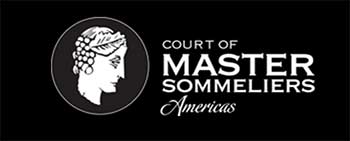If you’ve been reading this column, you know I passed my Wine & Spirits Education Trust (WSET) Sommelier Level 2 (Intermediate) exam “With Merit” about a year ago and against my better judgement, I decided to pursue my Somm Level 3 (Advanced) certification. While I know a lot of wine aficionados, I’m not aware of anyone on the Oregon Coast being a WSET Level 2 or Level 3 Sommelier.
There were 15 of us – 2 from Oregon, 13 from Washington – who freely gave up Saturdays and Sundays over an eight-week period to attend wine classes at the Northwest Wine Academy in South Seattle this Spring. In addition to studying the world’s major wine regions, we studied viticulture (grape growing) and enology (winemaking). We also tasted and systematically analyzed about 100 wines corresponding to the wine regions being discussed.
I took the three-part exam on April 30th in Seattle. The exam’s first part is the blind tasting wine analysis of two wines, an unknown white, followed by an unknown red. WSET has created a very specific process for analyzing wine and in order to pass this section, you have to following their process. If you’ve seen the movie “Somm” you get the general idea of how this exam section goes, with the biggest differences being that we aren’t required to identify the wine and its region. Instead, to pass at this level, you must nail the wine’s aromas and flavors, as well as it’s alcohol, body, acid and tannin levels. Of the exam’s three sections, this is the easiest. For those of you wondering, I identified the 2 wines as an Alsatian Gewurztraminer and a Bordeaux blend from Pauillac.
After the blind tasting was completed, we moved to the exam’s theory section, which consists of 50 multiple choice questions and four essay questions. I opened my testing book and stared at multiple choice question #1 and had no clue what the answer was. What a great start! I circled it and moved on. After my first pass at the 50 questions, I had circled 7, answered the other 43, and was pretty sure I’d pass this section of the exam. Of course, I went back and worked through the circled questions, some with more systematic reasoning…. this hot climate grape has lower acid levels, so the answer is “B”, while other questions received the “eenie, meenie, miney, mo” reasoning. Either way, I worked through this section in about 45 minutes, which left a little more than an hour for the four essay questions. Worldwide, the WSET Level 3 exam has about a 50% pass rate. Most students who stumble do so in the essay section; I was about to learn why.
I opened the essay exam booklet and found a question about Aglianico waiting for me. What is Aglianico you ask? It’s a red grape, from Southern Italy and very few people drink it, because Sangiovese (Chianti) and Nebbiolo (Barolo and Barbaresco) make better wine and thus, get all of the attention. So, I proceeded to write an essay answer around the only things I knew about Aglianico: 1-it’s a red grape, 2-from Southern Italy and 3-nobody drinks it. We’ll see how many points I get from that.
There was a question asking us to discuss why a bottle of Dom Perignon is so expensive and a question asking us to explain the difference between two sweet wines (one was botrytized and the other was a late harvest). I felt pretty good about my answers on those questions and moved on. The final essay question asked us about Argentina’s signature white grape, Torrontes. We needed to discuss this grape’s 2 growing sub regions, Uco Valley and Maipu. I was ready for this! I had taken the week off and had done my final studies, which included Uco Valley and Maipu! I diligently began writing about how the differences in vineyard locations, climate and terrain impacted the aromas and flavors of Torrontes. I finished up the essay questions, handed in my exam booklet and left feeling pretty confident. As I began my drive back to Cannon Beach, I called Maryann and told her the exam went well and that although it was tough, I thought I’d pass. That didn’t last long….
I stopped for a late lunch and brought my study binder into the restaurant. While eating, I looked through it to double check my answers to questions I could remember. And then I saw it, Uco Valley isn’t in a valley at all, it’s in the foothills of the Andes and Maipu isn’t in the mountains, it’s in a valley. Oh no…. I flip flopped these two regions! The beautiful answer I wrote describing Maipu was actually about Uco Valley and vice versa. I suddenly lost my appetite and felt a wave of nausea come over me. Instead of passing the essay questions with room to spare, I now find myself scrambling to put enough points together to pass.
I won’t get my results until sometime in July, but I’m not waiting around. I’ve already tuned up my study guide and started hitting the books. The WSET Level 3 exam is being offered again in December. If necessary, I’m going to ace it.



My son-in-law Nick Blewett just passed level3. He was from Washington but now lives in Victoria BC
Congrats to your son in law!
I’m dying to know. Did you pass the test the 1st time or have to retake?!!?
WSET is for restaurant managers and wine salesmen: people who need to know a little bit about wine. It is absolutely NOT a sommelier test. WSET3 requires only about 1/3 or 1/4 of the knowledge required for Sommelier 1 (Introductory Sommelier).
Dara-Saw your comments from last fall. I disagree about the level of knowledge required between WSET 3 and CMS 1, as I’ve taken both. CMS 1 is an entry level exam, multiple choice exam, which tests basic wine knowledge and general regional knowledge. WSET 3 is a 3 part exam, including multiple choice, sensory analysis (tasting) and a written exam. This is much more robust than CMS 1 and is comparable to CMS 2, without the service component. I wish you the best in your wine studies.